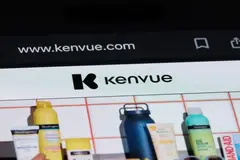Beauty industry giants collide for cosmetic safety to end “historical lack of collaboration”
Key takeaways
- The KBDB Collaborative analyzed 1.25 million ingredients across 48,000 beauty products sold in the US.
- The report shows 76% of ingredients are verified for safety, but 24% remain uncharacterized, leaving major gaps in safety and transparency.
- The report highlights lip colorants, emollients, and surfactants as top priorities for innovation to reduce environmental and health risks.
A coalition of beauty leaders, including Sephora, Ulta Beauty, and Credo Beauty, has created the most comprehensive picture of what’s inside US beauty products to date. The cross-industry collaboration has found that while 76% of ingredients are now verified for safety, nearly a quarter’s safety remains unknown.
The findings come from the 2025 Beauty and Personal Care Ingredient Intelligence Report published by the Know Better, Do Better (KBDB) Collaborative. The initiative, led by non-profit ChemForward, seeks to standardize “clean beauty” through transparent, science-backed data.
“Despite its widespread adoption and significant market presence, the term ‘clean beauty’ lacks a single, universally accepted or legal definition,” Heather McKenney, science and safer chemistry lead at ChemForward, tells Personal Care Insights.
“This ambiguity creates a fundamental paradox: while consumer demand for safety drives the clean beauty market, the absence of clear, enforceable standards allows for varied interpretations across brands and retailers and among consumers.”
McKenny explains that consumers often assume that if an ingredient is disclosed on a product label and not excluded by a restricted substances list, it must be free of health concerns.
“However, we know this is not always the case. Many chemicals in common use have not been fully assessed for human and environmental impact, and under current regulations, most chemicals are presumed ‘innocent’ until proven guilty.”
The KBDB Collaborative analyzed 1.25 million ingredients across 48,000 beauty and personal care products in the US personal care market. This figure marks a five-fold increase from the 2023 dataset.
The KBDB Collaborative includes Sephora, Ulta Beauty, The Honest Company, Credo Beauty, Beautycounter, Dow, Inolex, and the Environmental Defense Fund.
Blind quarter
The 2025 Beauty and Personal Care Ingredient Intelligence Report found that 24% of ingredients remain uncharacterized. This means nearly one in four ingredients analyzed lack sufficient toxicological or safety data to determine whether they are safe, hazardous, or somewhere in between.
The report presents this figure as a “major blind spot” for safety and transparency. Stacy Glass, co-founder and executive director at ChemForward, tells us beauty and personal care brands can help close this gap in ingredient characterization by “changing the narrative.”
“The industry is largely still operating from a place of regulation and restricted substances. The report demonstrates a significant change in the narrative for the participating brands and retailers. It is now possible to move beyond regulations and restricted substances lists in the pursuit of safer ingredients and clean beauty,” Glass says.
“Consumers and investors alike can expect, and should insist upon, science-based, data-driven reporting of ingredient safety on both human and environmental impacts that was just not possible before.”
According to Glass, the gap results from a historical lack of collaboration in this space.
“‘Many hands make light work,’ especially when we are creating a shared dataset to enable the transition to safer chemistry.”
 Major beauty players, including Sephora, are collaborating to establish a science-based definition of clean beauty.The more companies contribute to populating the shared Chemical Hazard Data Trust (ChemForward’s ingredient safety database), the faster this phase of characterization will progress.
Major beauty players, including Sephora, are collaborating to establish a science-based definition of clean beauty.The more companies contribute to populating the shared Chemical Hazard Data Trust (ChemForward’s ingredient safety database), the faster this phase of characterization will progress.
“We are playing catch-up now to fill the knowledge gaps. But, we can imagine a day when human and environmental hazard data is readily available and all new ingredients entering the market are well characterized for human and environmental impacts from the beginning.”
Categoric focus
The report outlines lip colorants, emollients, and surfactants as top priority areas for innovation.
Lipsticks and lip glosses remain heavily dependent on synthetic dyes, many of which are flagged as high-hazard ingredients.
“The dataset revealed that there is an opportunity to innovate alternatives to organochlorine and organobromine colorants that meet performance criteria. The trend of more high-hazard chemicals was only observed in lip color,” McKenny says.
She stresses that safer, innovative colorants could help reformulate lip products, which pose higher exposure risks because they can be accidentally ingested.
Moreover, the report identifies several common emollients used in moisturizers as problematic due to potential persistence or bioaccumulation risks.
“Our high-level analysis of emollients showed that a few functional emollients are in high use and could offer innovation opportunities. Particularly, cyclic silicones such as cyclopentasiloxane or cyclomethicone were used in 14.6% of products in the dataset,” McKenny adds.
The report also identifies surfactants — the cleansing and foaming agents used in shampoos, conditioners, and other wash-off products — as another key area where innovation is still needed.
While most surfactants are considered safe for human health, the report notes that many pose environmental concerns, particularly related to aquatic toxicity once washed down the drain.
This creates a performance-versus-sustainability challenge, where surfactants’ efficiency in formulations is weighed against their problematic ecotoxicological footprint.
The KBDB Collaborative emphasizes that developing efficacious and environmentally friendly surfactants is essential to advancing safer chemistry in hair care formulations.
Assessing risks
The KBDB collaborative’s ingredient safety classifications are based on comprehensive toxicological assessments following the Chemical Hazard Data Trust framework. Independent third-party organizations, including ToxServices, NSF International, and Gradient, conduct assessments.
.webp) Reformulation of colorants, emollients, and surfactants is key to advancing safer, sustainable products.All chemical assessments undergo peer reviews by independent toxicologists before being included in the ChemForward database. Each ingredient receives a letter grade (A–F) reflecting its hazard profile. A/B/C indicate safer chemistry, D/F marks chemicals of concern, and “?” represents uncharacterized data gaps.
Reformulation of colorants, emollients, and surfactants is key to advancing safer, sustainable products.All chemical assessments undergo peer reviews by independent toxicologists before being included in the ChemForward database. Each ingredient receives a letter grade (A–F) reflecting its hazard profile. A/B/C indicate safer chemistry, D/F marks chemicals of concern, and “?” represents uncharacterized data gaps.
According to the report, 3.7% of the 1.25 million ingredients analyzed were classified as chemicals of concern. This means D- and F-rated ingredients, which are potentially hazardous to human health or the environment, are used in readily available products.
The figure shows an increase from 3% in 2023, and reflects three frequently used ingredients that were newly assessed in 2025 and turned out to be of higher concern, slightly raising the overall share.
McKenny says that most companies do not use recognized chemicals of concern by choice, but rather because safety assessments for those ingredients are still incomplete.
Supplier responsibility
Some of these concerning chemicals can be substituted, but not all have properly assessed replacements. According to the analysis, those ingredients that received D and F hazard ratings may not have functional alternatives that formulators can simply swap out.
Instead, companies using these D- and F-rated ingredients must innovate and reinvent before a transition to safer chemistry can be achieved.
“In the collaborative, these are important moments where manufacturers and formulators can communicate their needs directly with the suppliers. These market-validated calls for innovation are critical to complete the transition to safer chemistry,” Glass says.
“It should be standard operating procedure for suppliers to provide this information,” she adds.
McKenny echoes this, saying suppliers are best positioned to know and address chemical hazards in their formulations. She calls on suppliers to provide standardized and independently verified chemical hazard assessments for the products they sell into the personal care market.













